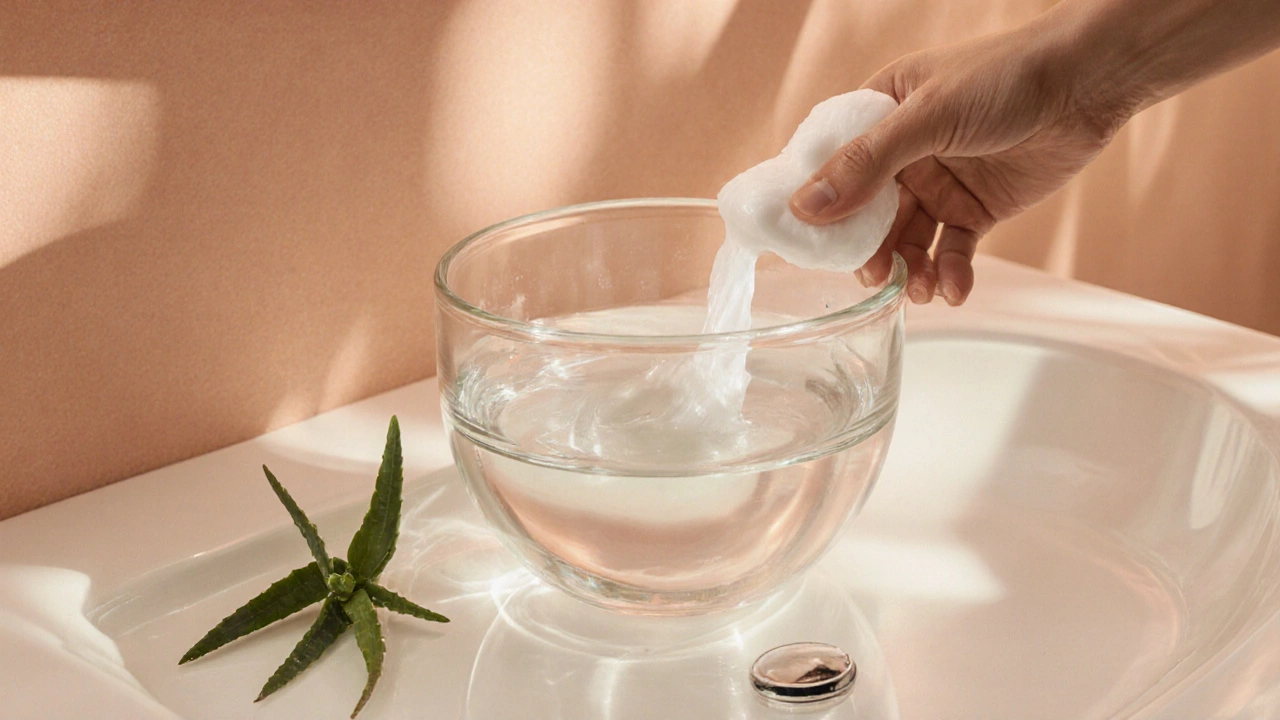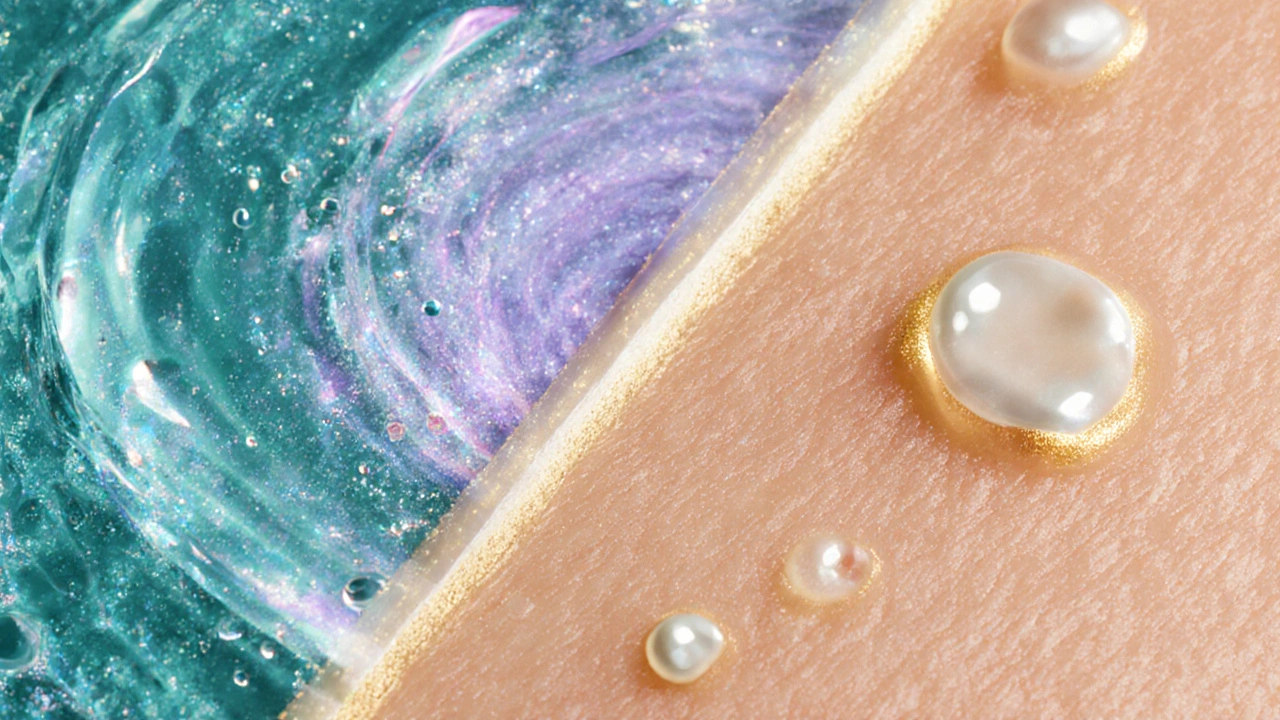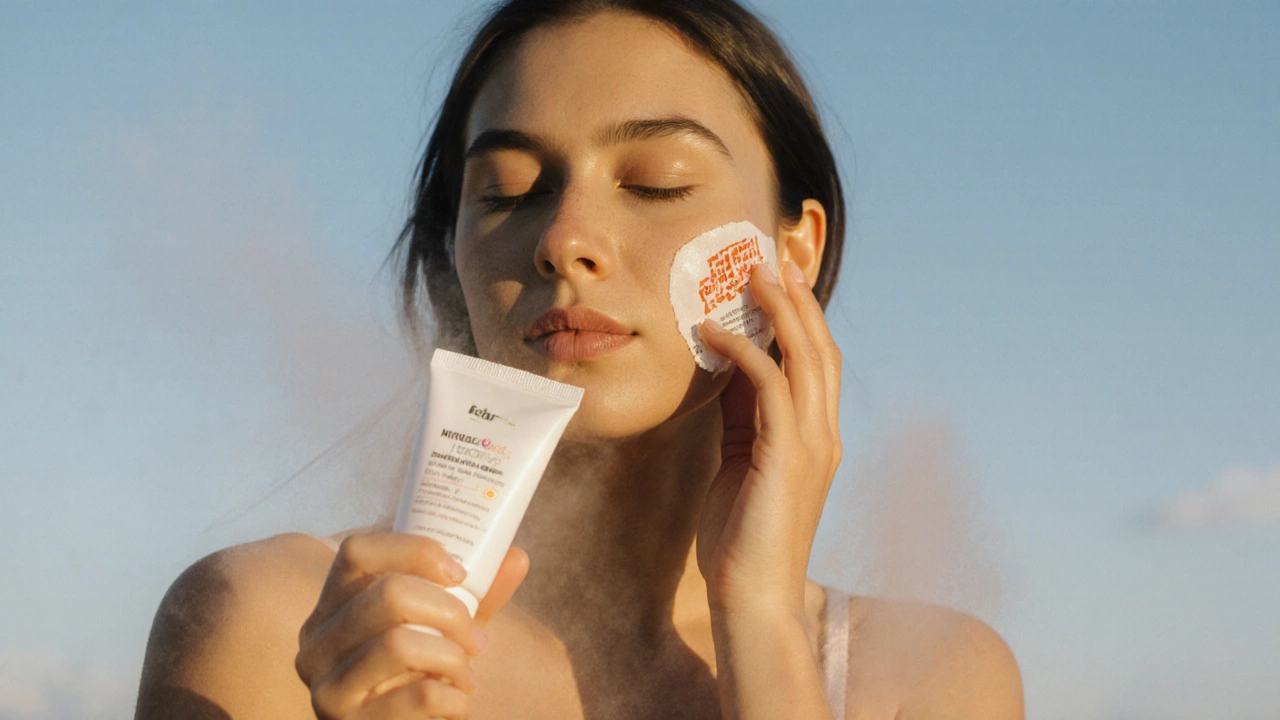The 5 Essential Steps of an Effective Skin‑Care Routine
 Oct, 8 2025
Oct, 8 2025
Skin Care Routine Builder
Your Customized Skin Care Routine
Cleanse
Exfoliate
Tone
Moisturize
Protect
Quick Takeaways
- Cleanse gently to remove dirt without stripping natural oils.
- Exfoliate 1‑3 times weekly to clear dead cells and boost cell turnover.
- Tone restores pH balance and preps skin for actives.
- Moisturize to lock in hydration and support the skin barrier.
- Protect daily with broad‑spectrum sunscreen to prevent premature aging.
When you hear people talk about skin care basics, they usually mean a handful of core actions that keep the skin healthy, clear, and resilient. Below is a step‑by‑step guide that breaks down each of those actions, why they matter, and how to do them right.
1. Cleanse - Start with a Gentle Cleanser
Cleanser is a water‑based product formulated to dissolve oil, sweat, makeup, and environmental pollutants without disrupting the skin’s natural barrier. It typically contains surfactants such as decyl glucoside or coco‑betaine that are mild enough for daily use.
Key points:
- Choose a formula that matches your skin type - gel for oily, cream for dry.
- Use lukewarm water; hot water can increase transepidermal water loss.
- Massage for 30‑60 seconds, then rinse thoroughly.
Skipping this step or using harsh soaps can strip lipids, trigger excess oil production, and leave the skin vulnerable to irritants.
2. Exfoliate - Remove Dead Cells Smartly
Exfoliation means shedding the outermost layer of dead keratinocytes. There are two main types:
- Chemical exfoliants (alpha‑hydroxy acids (AHAs) like glycolic acid, and beta‑hydroxy acids (BHAs) like salicylic acid) dissolve the bonds between cells.
- Physical exfoliants (fine beads or enzymes that manually scrub the surface) provide immediate smoothing.
For most people, 1‑3 applications per week are enough. Over‑exfoliating leads to redness, barrier breakdown, and increased sensitivity.

3. Tone - Balance pH and Prep for Actives
Toner is a lightweight liquid that restores the skin’s natural pH (around 5.5) after cleansing and provides a moisture‑rich base for serums.
Look for ingredients like witch hazel, rose water, or niacinamide. Apply with a cotton pad or press directly into the skin using palms - no rubbing needed.
4. Moisturize - Seal Hydration and Support the Barrier
Moisturizer is a blend of humectants (glycerin, hyaluronic acid), emollients (squalane, shea butter), and occlusives (petrolatum, dimethicone) that work together to attract, retain, and lock in water.
Guidelines:
- Dry skin benefits from richer creams; oily skin prefers lightweight gels.
- Apply while the skin is still slightly damp to trap extra moisture.
- Barrier‑supporting ingredients like ceramides and cholesterol are especially helpful for eczema‑prone or aging skin.
5. Protect - Daily Broad‑Spectrum Sunscreen
Sunscreen provides a physical or chemical shield that absorbs or reflects UV‑B (burn) and UV‑A (aging) rays.
Choose SPF30 or higher, broad‑spectrum, and water‑resistant if you’ll sweat or swim. Apply a pea‑sized amount to each side of the face, and reapply every two hours when outdoors.
Even on cloudy days, up to 80% of UV‑A penetrates, so sunscreen is non‑negotiable for long‑term skin health.

Comparison of the 5 Basics
| Step | Main Goal | Typical Key Ingredients | Frequency |
|---|---|---|---|
| Cleanse | Remove dirt, oil, makeup | Gentle surfactants, glycerin | Twice daily |
| Exfoliate | Clear dead cells, improve texture | AHAs, BHAs, enzyme powders | 1‑3×/week |
| Tone | Restore pH, prep skin | Witch hazel, niacinamide, rose water | After each cleanse |
| Moisturize | Lock in hydration, protect barrier | Hyaluronic acid, ceramides, squalane | After tone, morning & night |
| Protect | Guard against UV damage | Zinc oxide, avobenzone, titanium dioxide | Every morning, reapply as needed |
Common Mistakes & How to Fix Them
Over‑cleansing - Using a harsh cleanser twice a day can strip the lipid layer. Switch to a pH‑balanced, sulfate‑free formula and limit morning washes to a splash of water if you’re not sweaty.
Skipping sunscreen on “indoor days” - UV‑A rays pass through windows. Keep a mineral sunscreen at your desk for a quick top‑up.
Using the same exfoliant year‑round - In colder months, the barrier is more fragile. Opt for a lower‑percentage AHA or a gentler enzyme mask instead of a 10% glycolic peel.
Applying products in the wrong order - Think of it as lightest to heaviest. Toner → serum (if you use one) → moisturizer → sunscreen.
Building a Routine That Sticks
Start simple: cleanse, moisturize, sunscreen. Add a toner once you feel comfortable, then introduce exfoliation on weekends. Consistency beats complexity; a 2‑minute routine you actually do will outperform a 15‑minute regimen you abandon.
Track your skin’s response for two weeks before adding another product. If you notice irritation, pull back to the previous stable step.
Frequently Asked Questions
Can I skip toner if I have oily skin?
Skipping toner isn’t harmful, but a lightweight, astringent toner can help control shine and tighten pores without over‑drying. Look for alcohol‑free formulas with niacinamide.
How long does it take to see results from exfoliation?
Most people notice smoother texture within 3‑5 days of regular use. Visible brightening or reduction of fine lines can take 4‑6 weeks, as new skin cells replace the old ones.
Is SPF 30 enough for daily use?
Yes, SPF 30 blocks about 97% of UV‑B rays, which is adequate for everyday exposure. If you’re outdoors for extended periods, step up to SPF 50 or reapply more frequently.
Should I use a separate night moisturizer?
Night creams often contain richer emollients and actives like retinol that can be photosensitive. If you use any nighttime actives, a slightly heavier moisturizer can improve absorption and minimize irritation.
My skin feels tight after cleansing-what’s wrong?
A tight feeling usually means the cleanser is too stripping. Switch to a formula with added humectants (glycerin, panthenol) and avoid hot water.